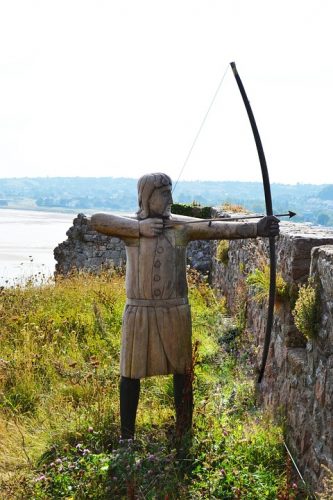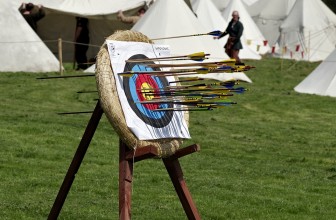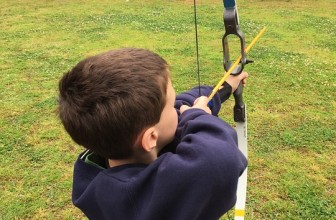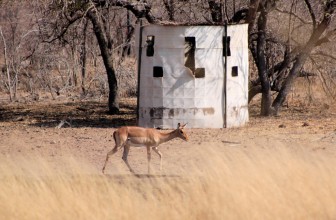A qualified coach can help you greatly in learning the skills of accurately using a longbow. However, you will also need to personally work on your skills to improve your accuracy. Here are some guidelines that will help you enhance your longbow accuracy while practicing with this traditional bow.
Techniques To Improve Longbow Accuracy:
Steps involved in shooting with a longbow might be known to you if you have already started using a longbow. However, precision, skills, and knowledge can help better your accuracy.
 Stance – This the first step in which you have to stand comfortably and in a relaxed way, with the feet approximately at shoulder-width distance. Make sure the shoulders are slightly angled away from your target as it will prevent you from drawing the bowstring across the chest. The knees should be bent only slightly so that you maintain your balance.
Stance – This the first step in which you have to stand comfortably and in a relaxed way, with the feet approximately at shoulder-width distance. Make sure the shoulders are slightly angled away from your target as it will prevent you from drawing the bowstring across the chest. The knees should be bent only slightly so that you maintain your balance.- Grip – The grip of the bow needs to rest against your hand web’s bone, with the fingers relaxed. A strong grip will only make you torque your bow.
- Arrow Nocking – Place the arrow nock on the bowstring right between nocking points. The cock that fletches on your arrow should face towards you, while the nock should be firmly pushed onto the string of the bow. Also, place the shaft (arrow) on the bow hand’s top finger.
- String Hand – Bow drawing is based on two appropriate finger positions. In the first position, you can place 1 finger on top of the arrow with the other two underneath it. In the second position, you can shoot with all the 3 fingers underneath the arrow; and in this position, the shaft will come closer to the eye. Both the positions work; however, in case you opt for three-under you need to shoot with a bow that is custom-made for shooting accurately with 3 fingers underneath the arrow as you will have to flex the bow’s bottom limb much more than its top limb, affecting the flight of the arrow.
- Preparing For The Draw – Make a preliminary check for aim when drawing back the string. Also, check the string’s alignment with the bow center; while making sure that the point (arrow) aims exactly at that point that you want to aim (it is most likely that because the string lies right in front of your eye, you will get a blurred vision). Holding the bow in a vertical position will ensure that the bow’s edge and the string are in parallel position.
- Drawing – Choose a spot on your target. Stare well at the spot. Starting with the position in which the bow is at the knees, raise your bow up while preparing to draw. Make sure that the time, in which the arrow points at your target, you have reached the anchor point. The entire motion has to be fluid, without you having to take eyes off your target.
- Anchor Point – Look for an anchor point that is comfortable, and don’t let go of it. You can try settling your fingertip (middle finger) in your mouth’s corner. Also, there are some experienced longbow hunters who place their nose right on the fletching (arrow) so that they can produce another anchor point. Remember, that compared to a compound bow, a longbow’s draw length is much shorter, which means that you will not be able to capitalize on a single anchor point every time you shoot.
- Canting – Cant the bow to ensure that your arrow stays on shelf, while taking the riser way out of sight. This will allow you to stay focused on your target while sighting down your shaft (arrow). This is a good way to aim. The cant angle depends on your level of comfort. Make sure that it comes naturally, rather than forcing an angle that you are not comfortable with.
- Releasing – Once you have anchored as well as set your focus on your target, let it go. Thinking a lot about releasing the arrow perfectly will surely break your concentration (from target), making you miss the target altogether. It is pointless to think; when you are ready simply shoot and see what happens.
In Conclusion:
All the above steps when taken carefully every time you shoot will help you improve your accuracy level with a longbow. As always, practice is your greatest weapon to improve so don’t shy away from it.


